Email best practices
The state of small business email marketing: Inbox Insights 2023

Email best practices

In many ways, the inbox provides a level playing field for businesses of all sizes and types. If you can build a list of engaged subscribers and deliver relevant messages, a small business has about the same chance of reaching someone with email as a Fortune 500 company.
Of course, that’s not to say there aren’t some big differences between enterprise and small business email marketing. Results from our Inbox Insights 2023 survey show that while email marketers at small- to medium-sized businesses (SMBs) have room to grow, they also enjoy some unique advantages over larger competitors.
More than one-third of the 3,000+ senders who participated in Inbox Insights told us they work for companies with Fewer than 10 people. This gives us an excellent opportunity to explore the state of small business email marketing in 2023. Let’s dig into the results.
The U.S. Census Bureau defines small businesses as firms with $1 million to $40 million in annual revenue or 100 to 1,500 employees. That is a huge range, especially when you consider the bureau also reports that most U.S. business have less than five employees.
When it comes to global businesses, though, the word “small” is very subjective. Are small businesses defined by revenue, employee headcount, number of paying customers, or something else?
Industry also plays a role in determining what a small business really is. A small manufacturer or healthcare company might look quite different compared to a local restaurant or a small marketing agency.
The largest employers in the United States include Walmart with 2.3 million workers and Amazon with 1.6 million employees (Source). However, there are also plenty of tiny ecommerce companies being run out of people’s homes. According to research from Pipe Candy, 90% of ecommerce companies in the U.S. make less than $1 million per year. But no matter how big or small, they’re all using email to communicate with customers.
When we broke down business sizes for Inbox Insights 2023, we asked respondents to choose based on the total number of employees in their company:
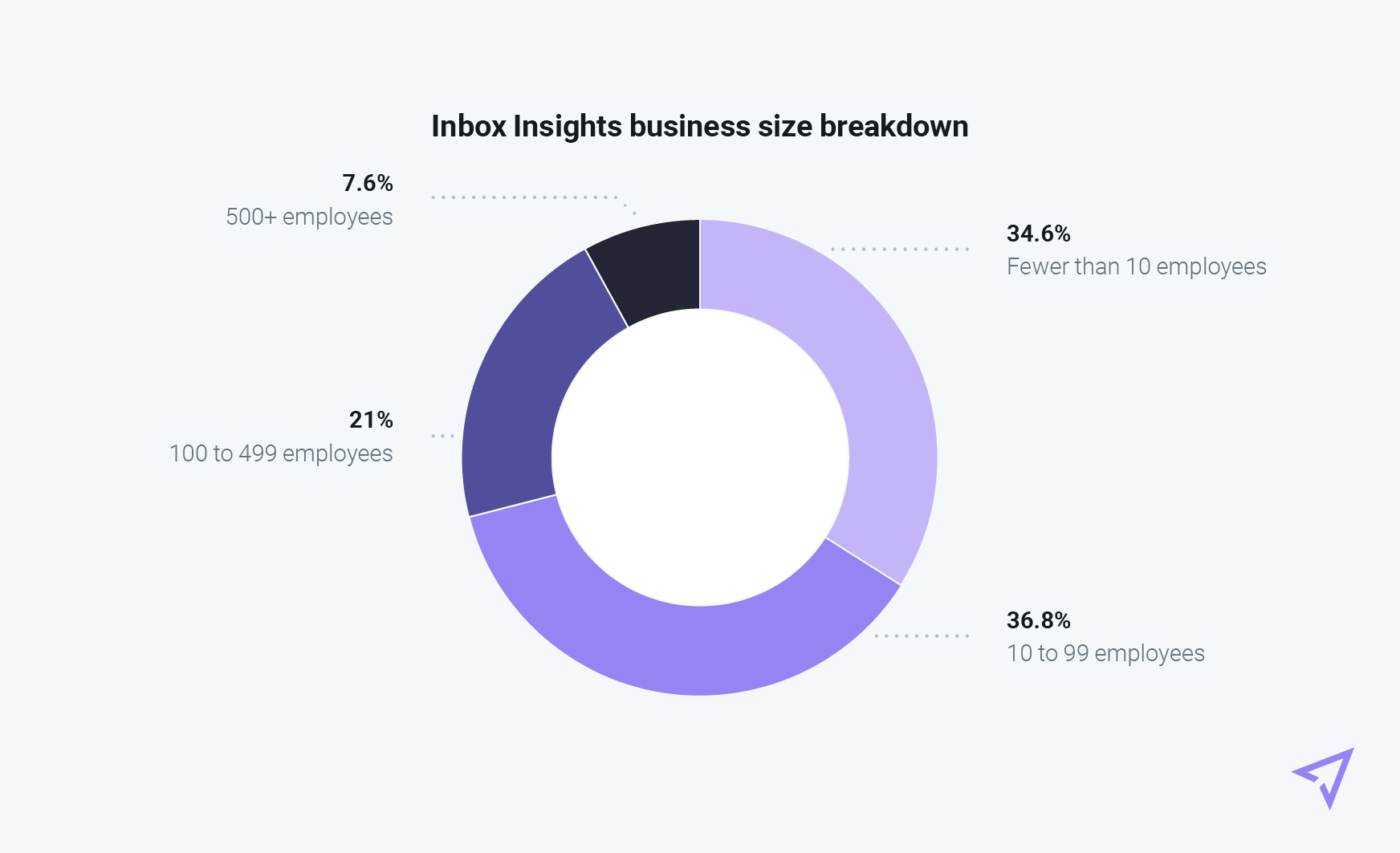
For the purposes of this article, we’ll mainly be looking at the smallest business or those with Fewer than 10 employees.
Around 60% of all respondents in our survey would describe the success of their email programs over the last 12 months as either Very successful (16.4%) or Somewhat successful (43.5%).
However, when we look only at the smallest businesses, the picture isn’t quite as positive. Among senders with under 10 employees, 34.4% called email Somewhat successful, and only 12.6% said it was Very successful. In total, that’s just 47%, which is a lot lower than the global average. Just over 15% of the smallest businesses in our survey would call email unsuccessful, which is the highest percentage of any business size.
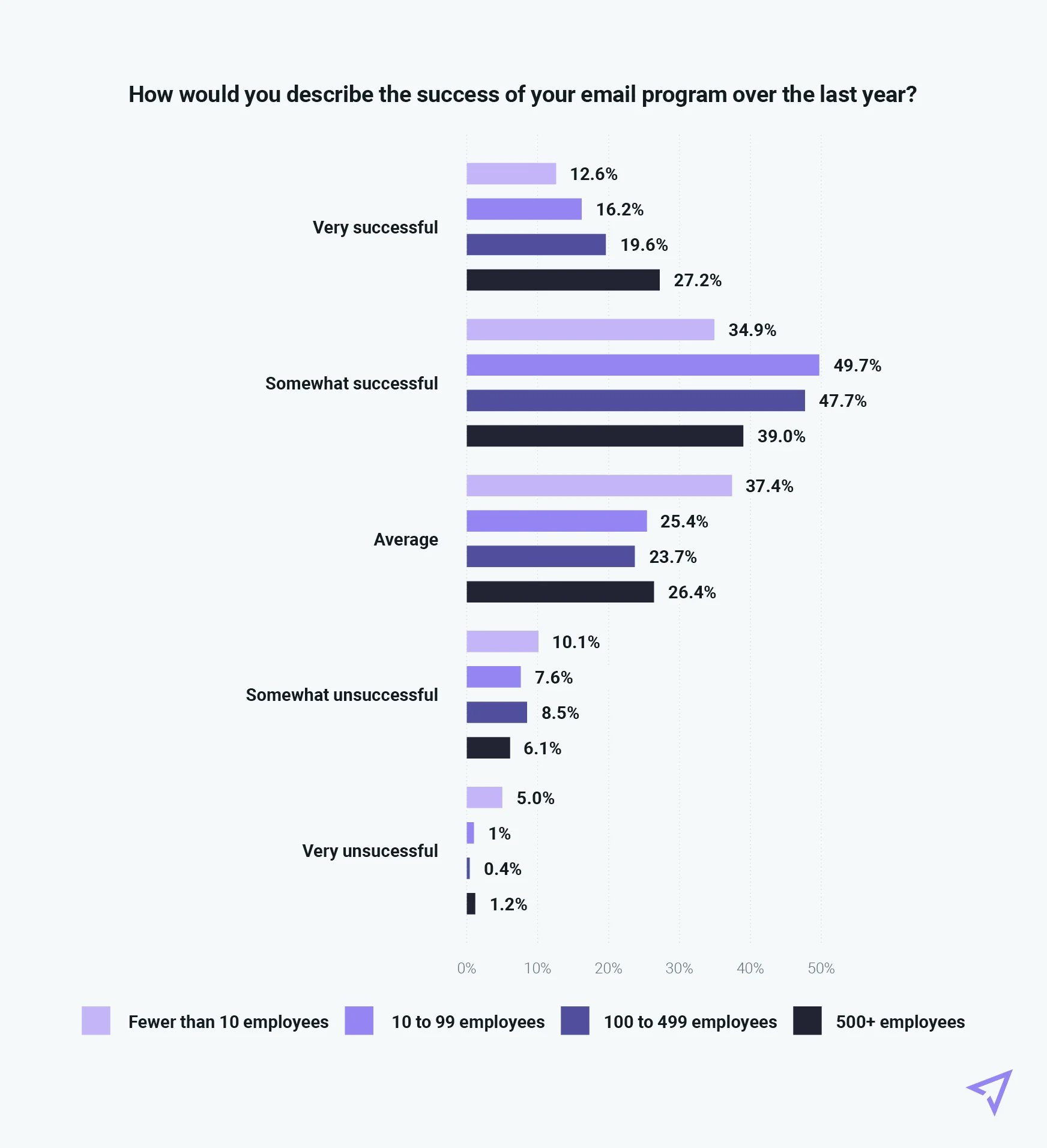
It can be tough for small businesses to find the time and resources to focus on email marketing. Our survey found that around 53.7% of respondents from companies with Fewer than 10 people describe themselves as the owner of the business. The smallest businesses were also the most likely to report having an email team of just one person (68.1%).
Those two findings suggest there are situations in which the business owner is handling email marketing efforts on their own. These senders need simple but powerful tools that can improve email marketing efficiency.
The email marketing metrics small businesses use to measure the channel’s success may look different than the key performance indicators (KPIs) larger senders choose to use.
More than 60% of respondents at businesses with Fewer than 10 employees chose the Open rate as a top email metric. That’s significantly higher than all other business sizes. Larger organizations were more likely to select metrics that reflect email’s direct impact on financials, such as Revenue from email and Email ROI (return on investment).
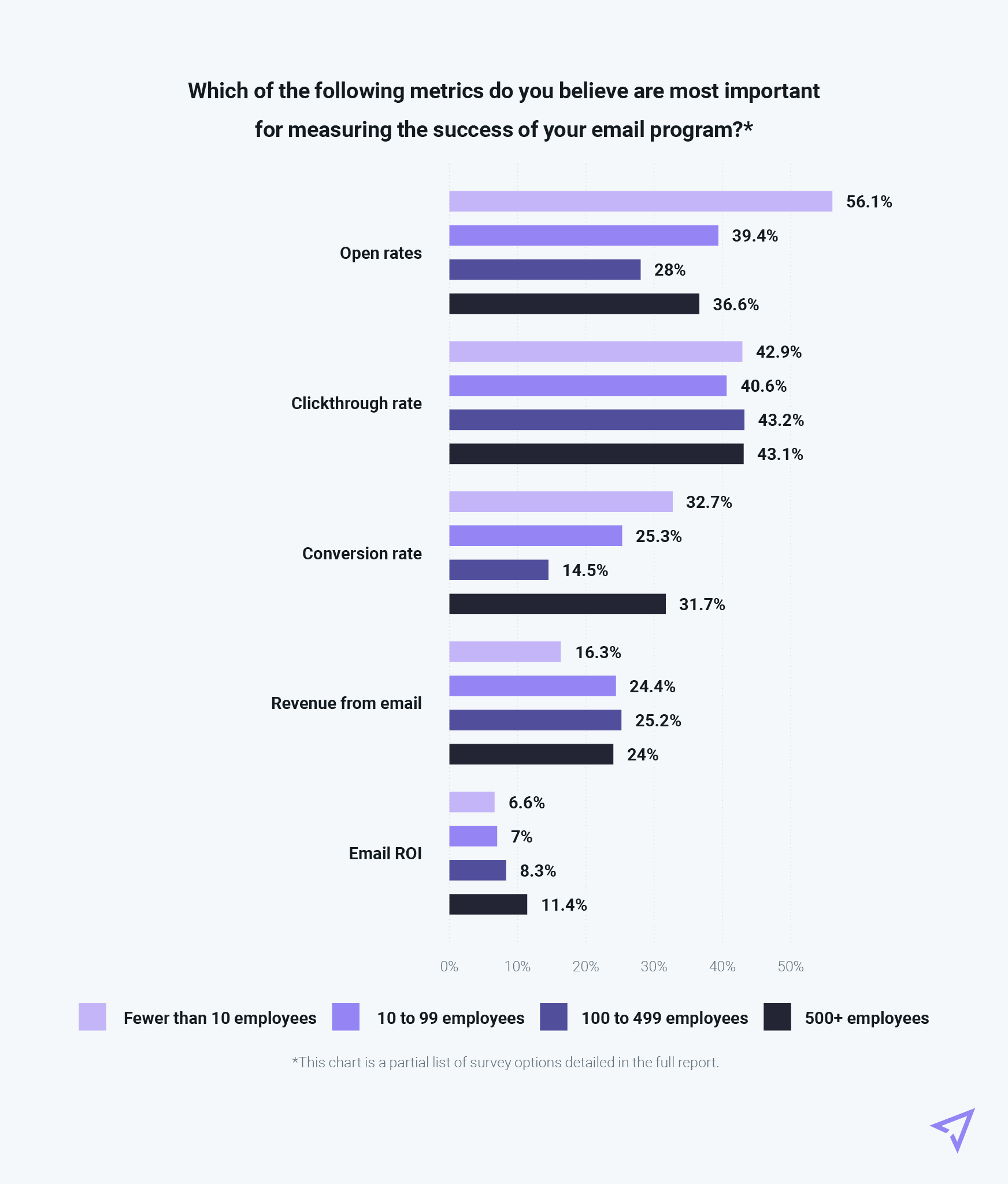
The email open rate has a reputation for being a metric that gets artificially inflated. Recently, Apple’s Mail Privacy Protection (MPP) made open rates even less reliable as a measurement of success. That’s because Apple is pre-loading email marketing campaigns before recipients actually open them. Gmail did something similar for years, but most email service providers discount those false opens.
Seeing inflated open rates could prompt senders to have unrealistic expectations for other metrics – from clicks to conversions to revenue generation. While open rates certainly matter, it’s wise to avoid placing too much importance on them as a primary measure of success.
Still, the ability to measure small business email marketing success is crucial. Without accurate performance metrics, how do you know what’s working and what needs to be improved?
Inbox Insights 2023 found that only around 25% of senders from small businesses feel they can accurately measure the impact that email has on their company. While more than half of small business senders say they are somewhat able to measure success, 19% admit they are unable to do so at all.
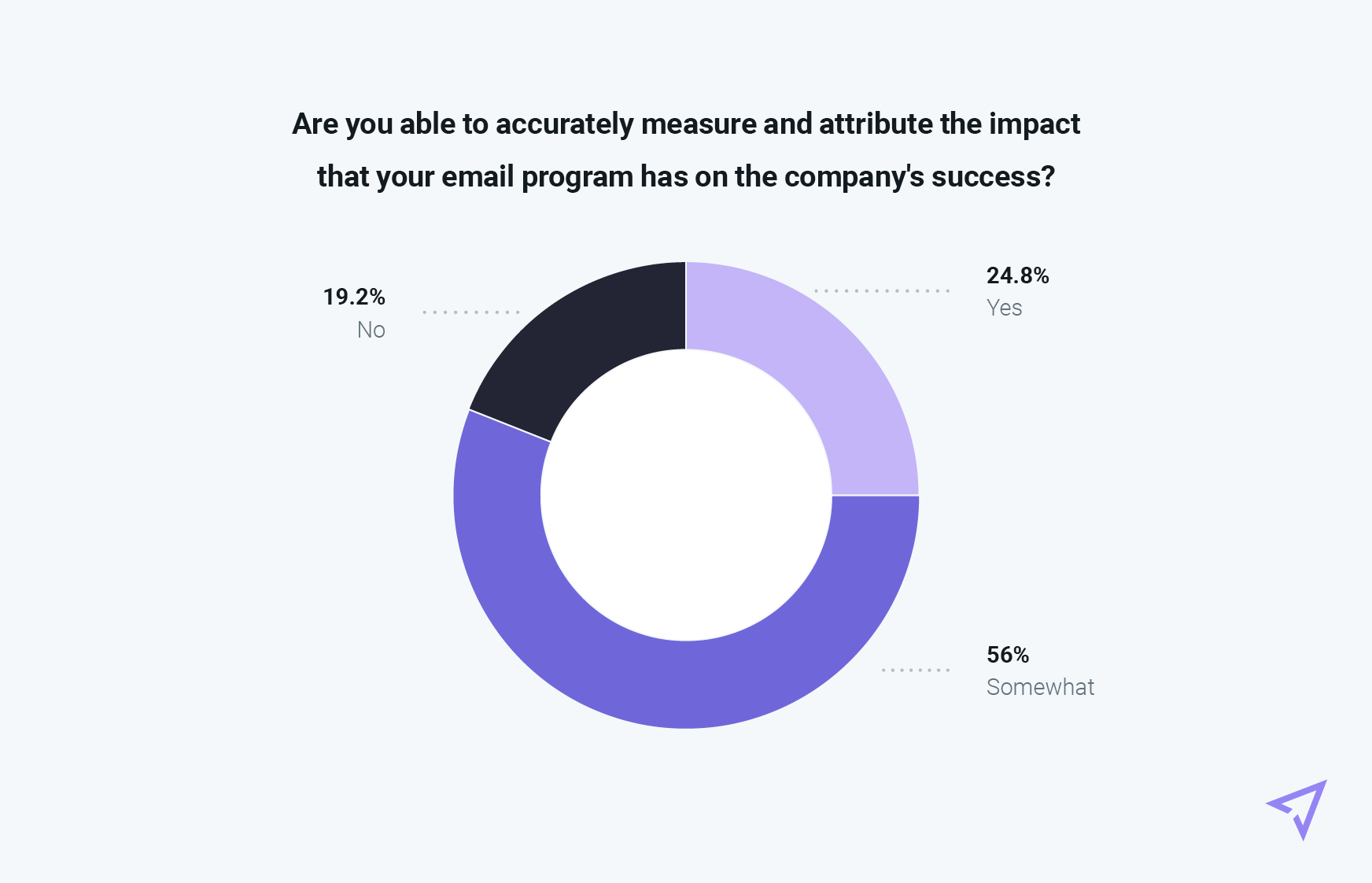
As a small business marketer, you need to understand what email metrics mean, and you need a platform that provides reliable, in-depth reporting on email marketing performance.
It’s not easy being the little guy. Small business email marketers may face an uphill battle in their quest to turn contacts into customers. Research shows a sluggish economy impacts SMBs more than larger business sizes.
The low-cost, high-return email marketing channel can help small businesses survive economic downturns. The Sinch Mailjet report “Email in an evolving economy” found that, among those who work in marketing, nearly 60% believe email is the channel best poised to provide a strong ROI during a global recession. But for that to happen, marketers need to overcome challenges so they can get the most out of email communications.
When the Inbox Insights 2023 survey asked senders to choose their top three constraints to email marketing success, one particular problem stood out on the list. Standing out in the inbox (48.2%) took the top spot for those with Fewer than 10 employees. In fact, the smallest businesses were at least 10% more likely than any other business size to choose that constraint.
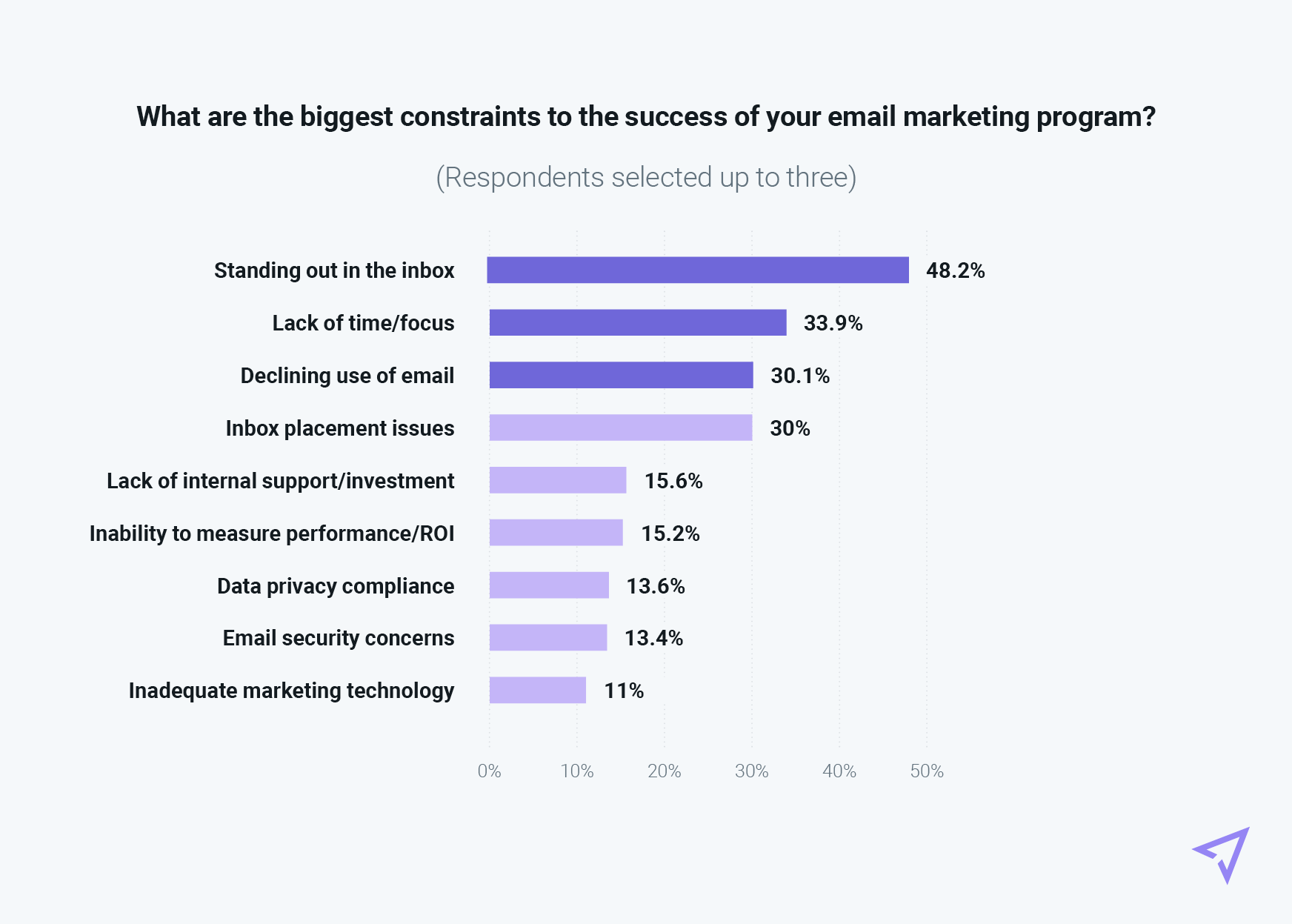
It’s no big secret that consumers’ inboxes are crowded, and people are constantly being bombarded with digital distractions from other channels. The ability to stand out requires creativity and consistency in small business email marketing.
Here’s the catch… Creativity and consistency require time and effort. But the second biggest constraint for small business marketers is a Lack of time/focus (33.9%).
We get it. It’s hard to take small business email strategy to the next level when other aspects of your job also demand your time and attention. Interestingly, our survey found that larger organizations struggle with time and focus just as much or more than SMBs. In other words, maybe there’s never enough time.
That’s why an easy-to-use email marketing solution for small business can be a huge benefit to any sender. When the right platform does some of the heavy lifting, your email program can level up.
Small business email marketing isn’t all struggles and hardships. In fact, being small can sometimes give you a competitive edge. For example, speed and agility are two attributes that many SMB marketers have and larger companies lack.
Inbox Insights 2023 found that many small businesses and one-person email teams launch new email campaigns quite quickly. Among senders from companies with Fewer than 10 employees, 68.6% get through the process of strategizing, writing, designing, building, and launching an email in less than one week.
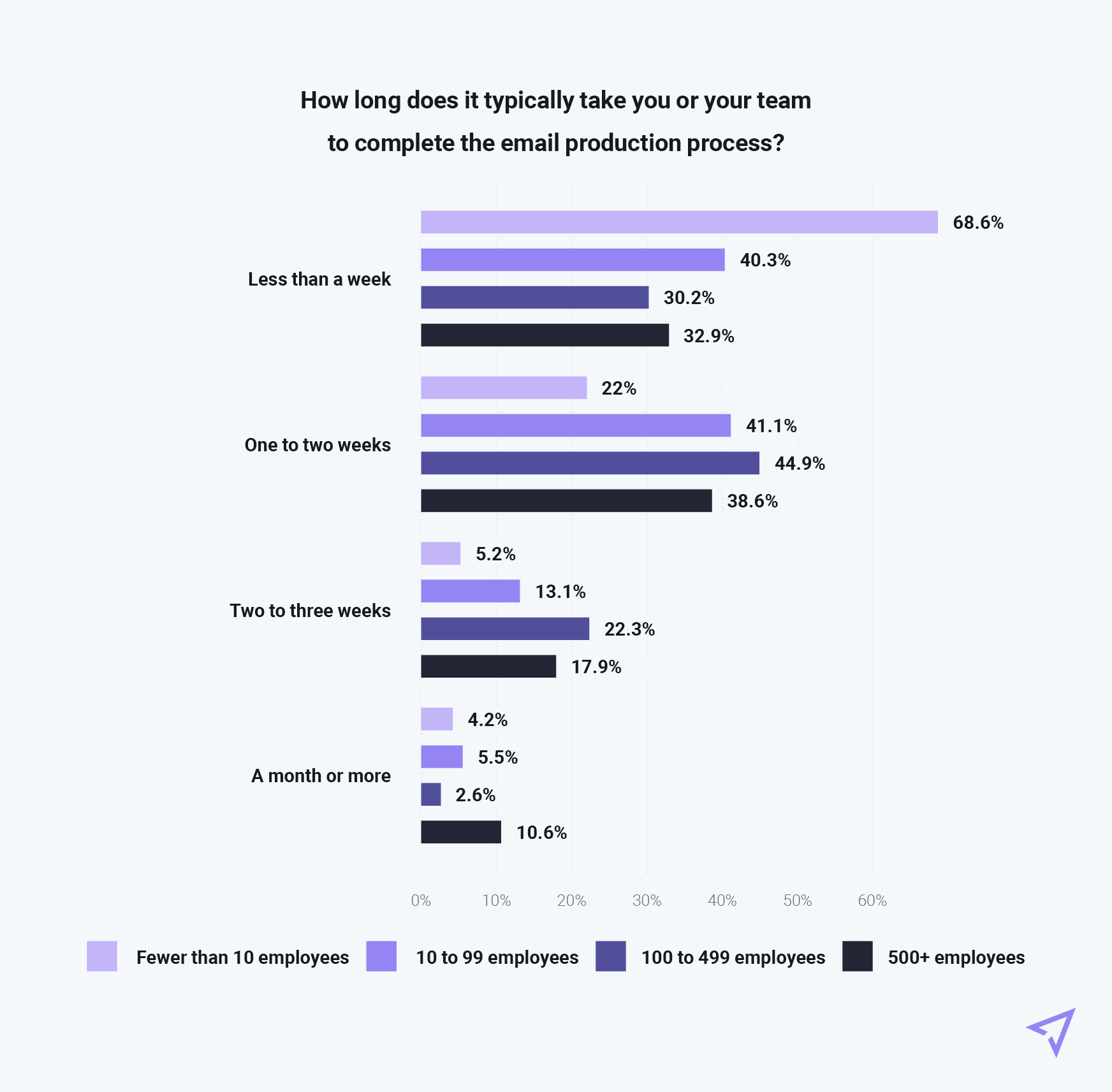
While large email teams often deal with corporate red tape, lengthy approval processes, and communication breakdowns, small business email marketing moves much faster. That means you can use email to quickly respond in a crisis situation or when you simply have an awesome campaign idea that you want to get out there ASAP.
Getting the job done quickly is one hoop that small business can jump through. However, your emails still need to get noticed once they reach the inbox. That may mean you need to start pursuing more complex email marketing techniques.
When asked to select the advanced email marketing tactics they’d be implementing in 2023, Personalization topped the list for all senders. 54% of small business marketers plan to personalize more email in the next year.
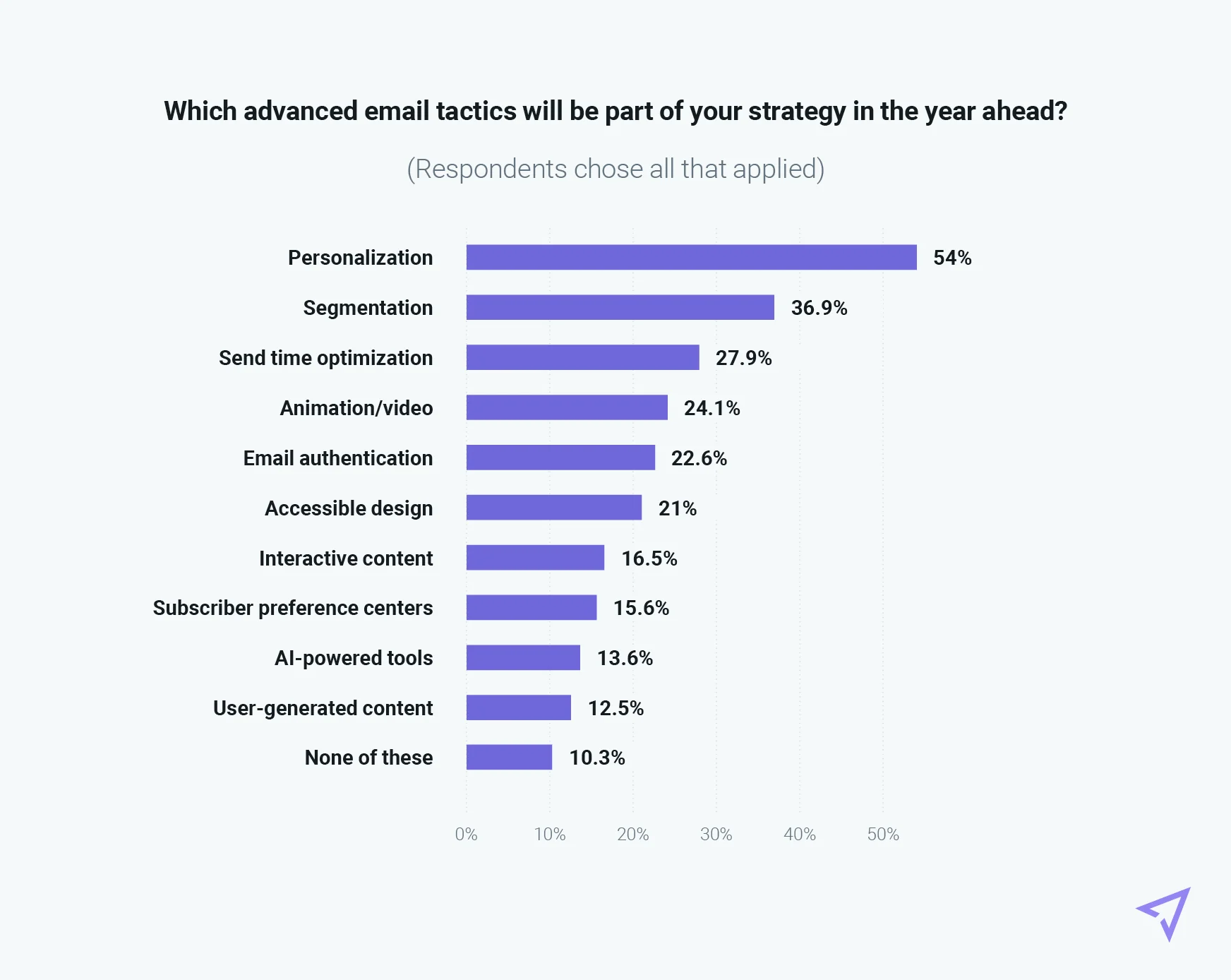
Moving down the list, nearly 37% of small business marketers plan to use Segmentation and just under 28% plan to implement Send time optimization in 2023. Just over 24% want to use Animation/video in email marketing, and 22.6% expect to strengthen Email authentication in the coming year.
Since Personalization is the most popular advanced email marketing tactic among small businesses, let’s take a closer look.
Inbox Insights 2023 revealed that 25% of senders from business with less than 10 employees were not using email personalization at all. However, it’s possible some of those senders are included among the 54% who plan to pursue personalization this year.
For the small businesses that are already personalizing emails, by far the most common way of doing so is with the subscriber’s name – either inside the email or in the subject line. 43.6% of small business senders are adding Names in email copy and 33.6% are placing recipient Names in subject lines.
Another one of the top three ways small businesses personalize email communication is through Transactional emails (39.9%). This method could include names in the messages as well as the recipient’s purchase information, shipping updates, or account information.
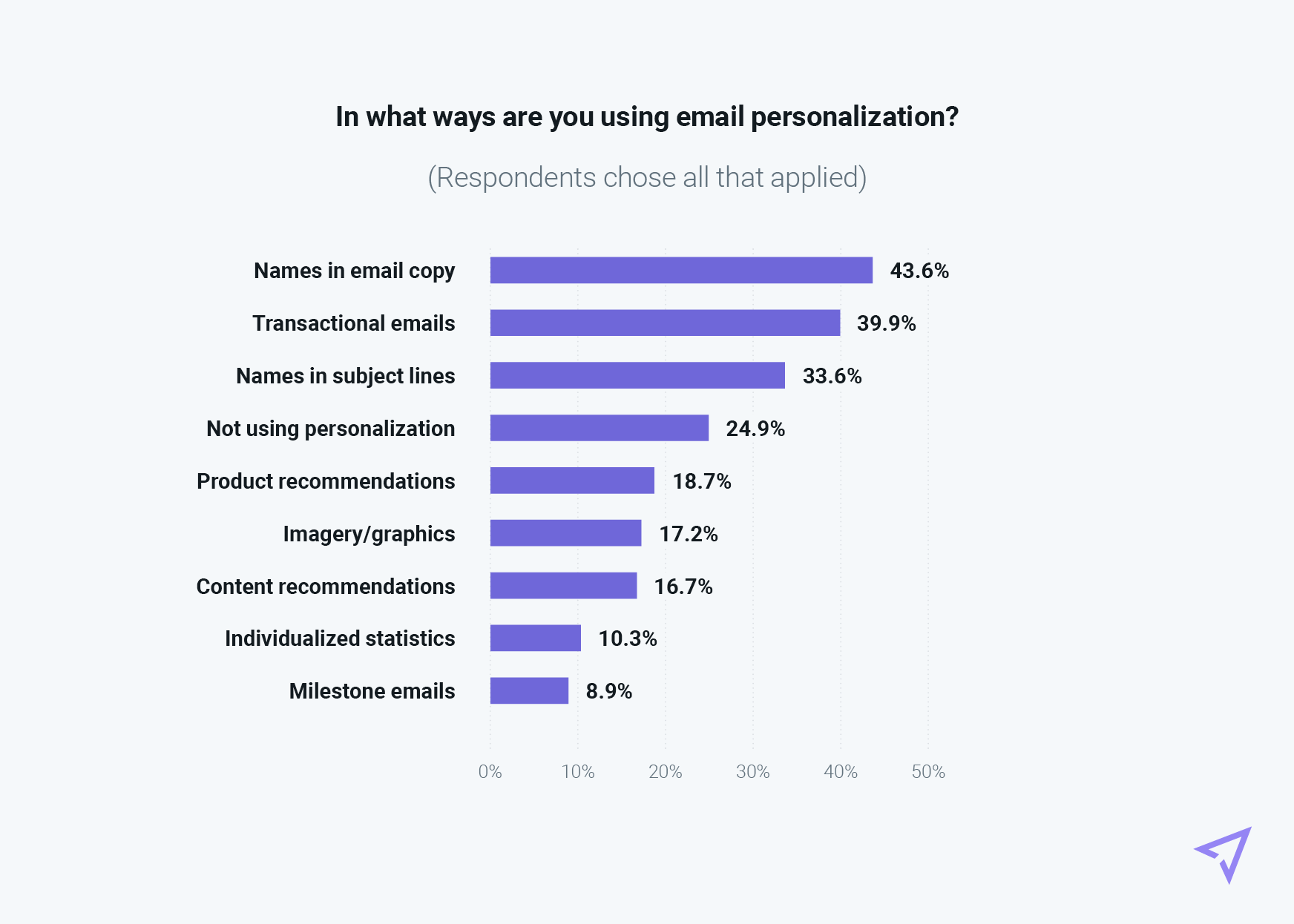
To harness the true power of personalization, you need subscriber data. Given the results above, it’s no surprise that more than 77% of marketers from the smallest business use a Subscriber name for personalization. But there’s much more marketers can use in personalized emails. A smart way to start doing that is creating signup forms that help capture important information about subscribers for both segmentation and personalization.
Your small business email marketing game will be transformed if you can find ways to dive deeper into the data. The good news is, you probably already have lots of useful information to help craft a more personalized email experience.
Zero-party data and first-party data represent stats and insights that contacts either willingly hand over to your business, or that you’ve collected through your own means of tracking. That could include:
Survey results show less than 25% of small businesses are using “non-name data” for personalization. However, the full Inbox Insights 2023 report found a correlation between successful email programs and senders who deliver personalized product and content recommendations.
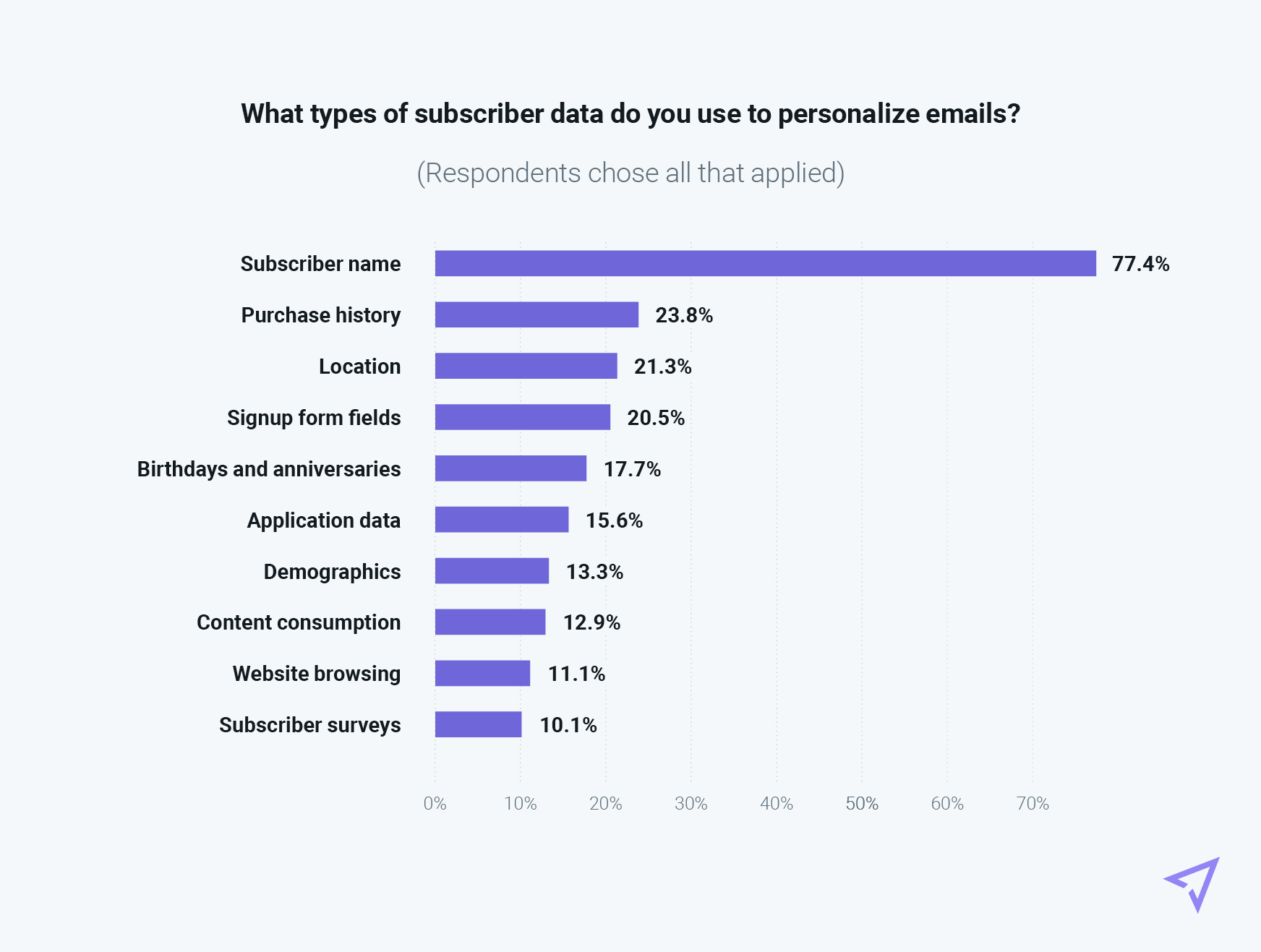
It’s no longer impressive to use name personalization because it is so prevalent in marketing, and it doesn’t exactly feel personal either. For more insights into how to improve your approach, check out our article on email personalization stats and strategies.
Every small business needs email marketing. It’s an indispensable communication channel. The right email marketing tools help you save time, maximize your efforts, and grow your business.
Sinch Mailjet is proud to empower small businesses around the world with tools that help them get the most out of every email campaign:
With small business marketing tools from Sinch Mailjet, you can take advantage of being fast and agile while using state-of-the-art software to get the job done.